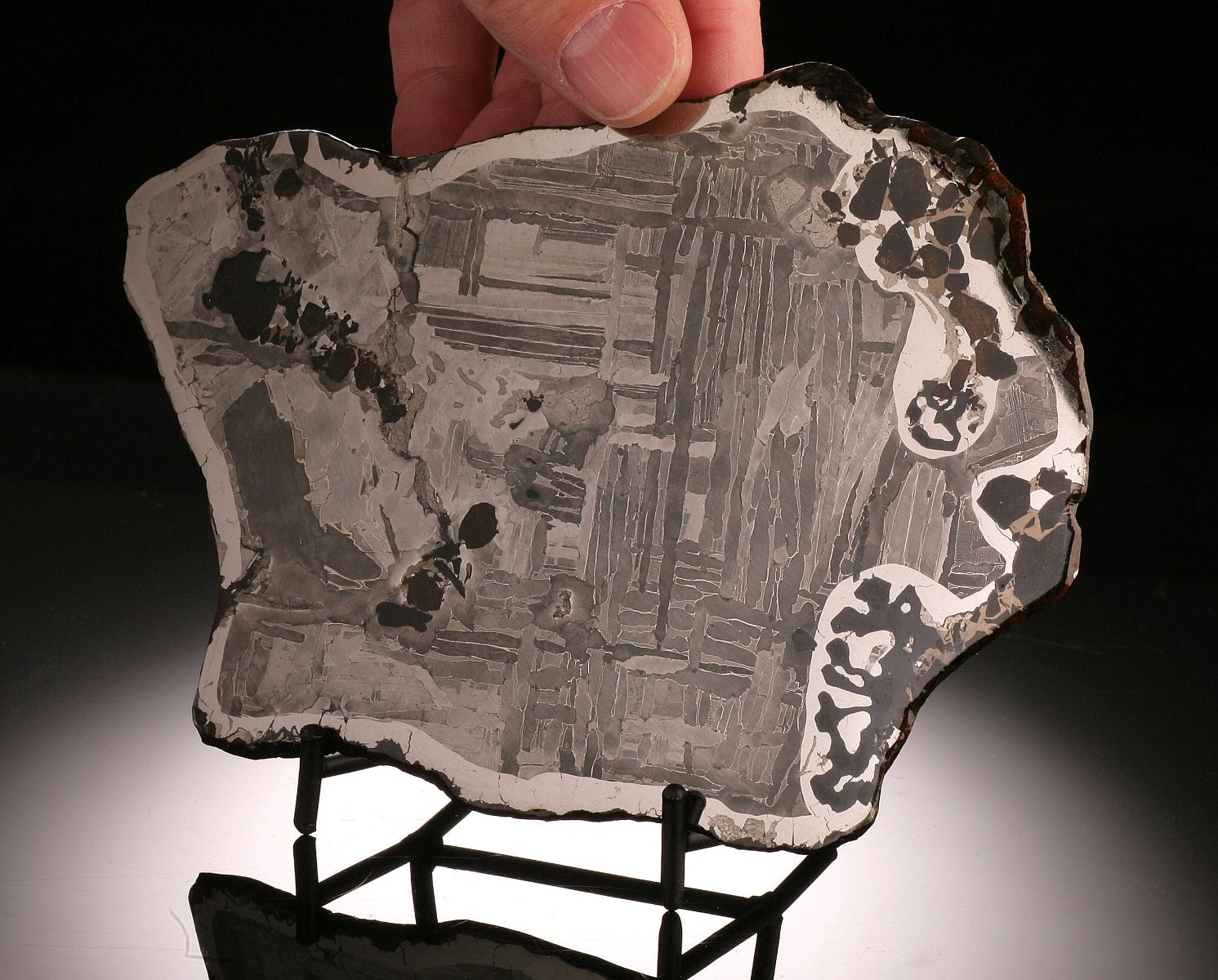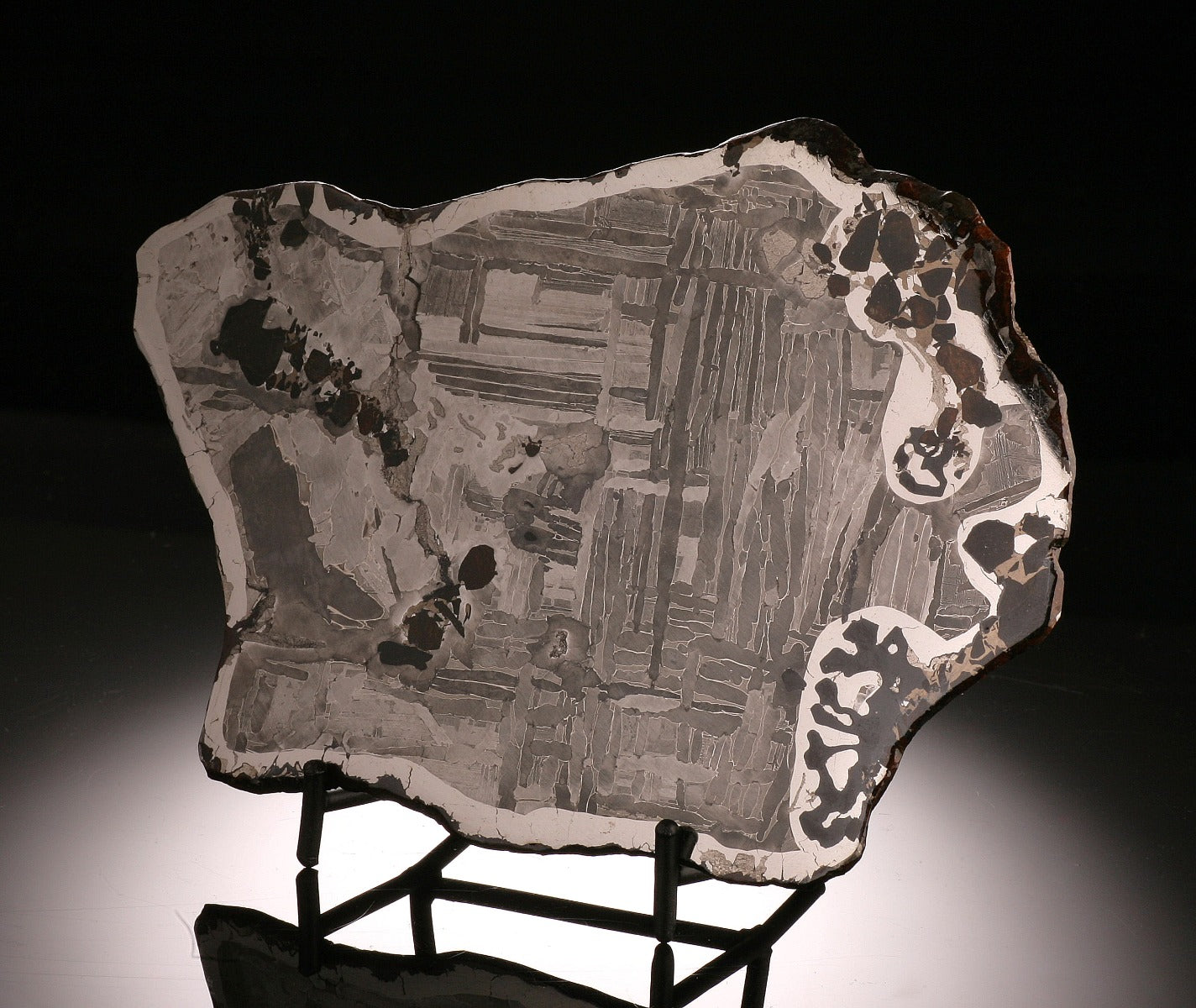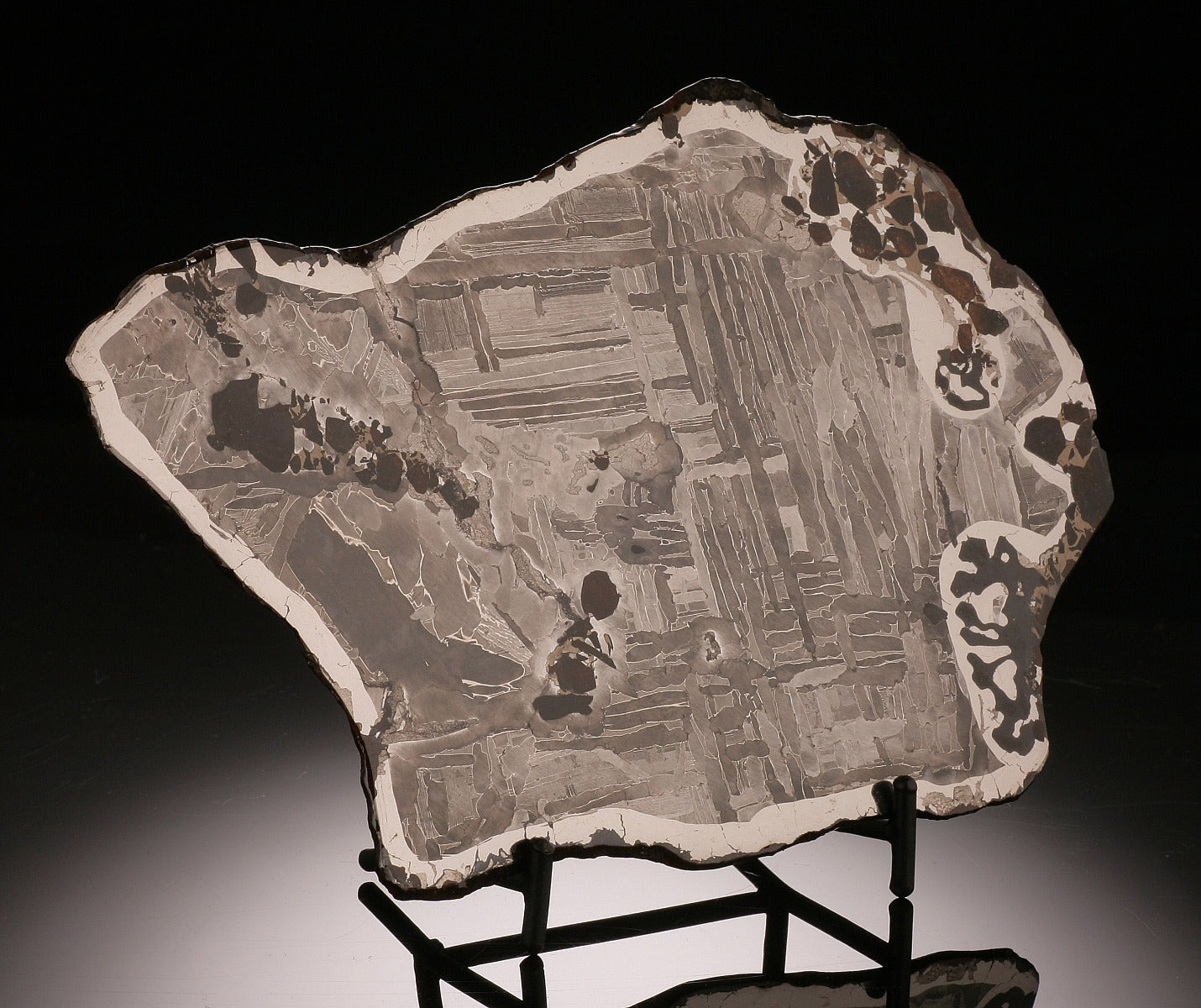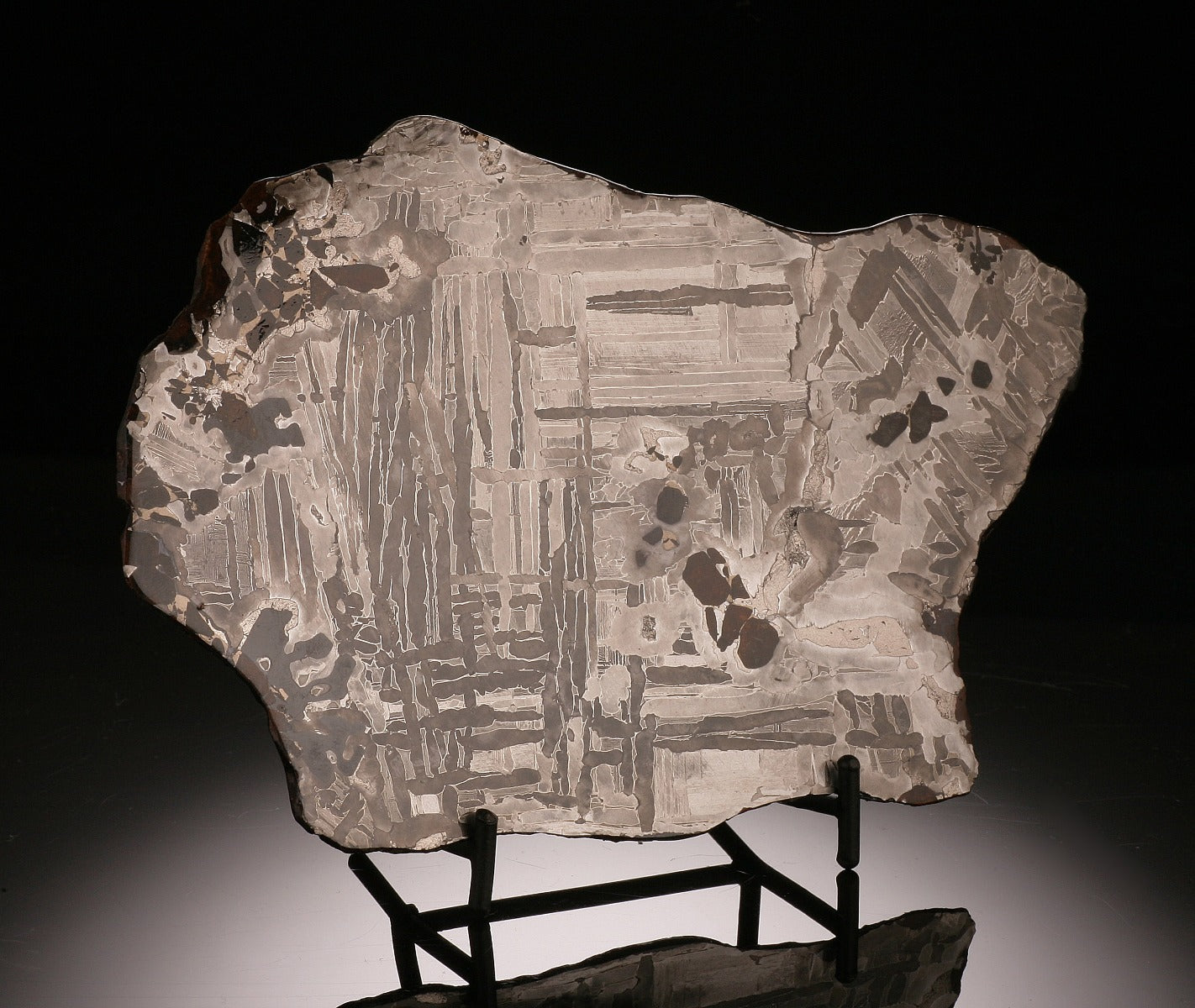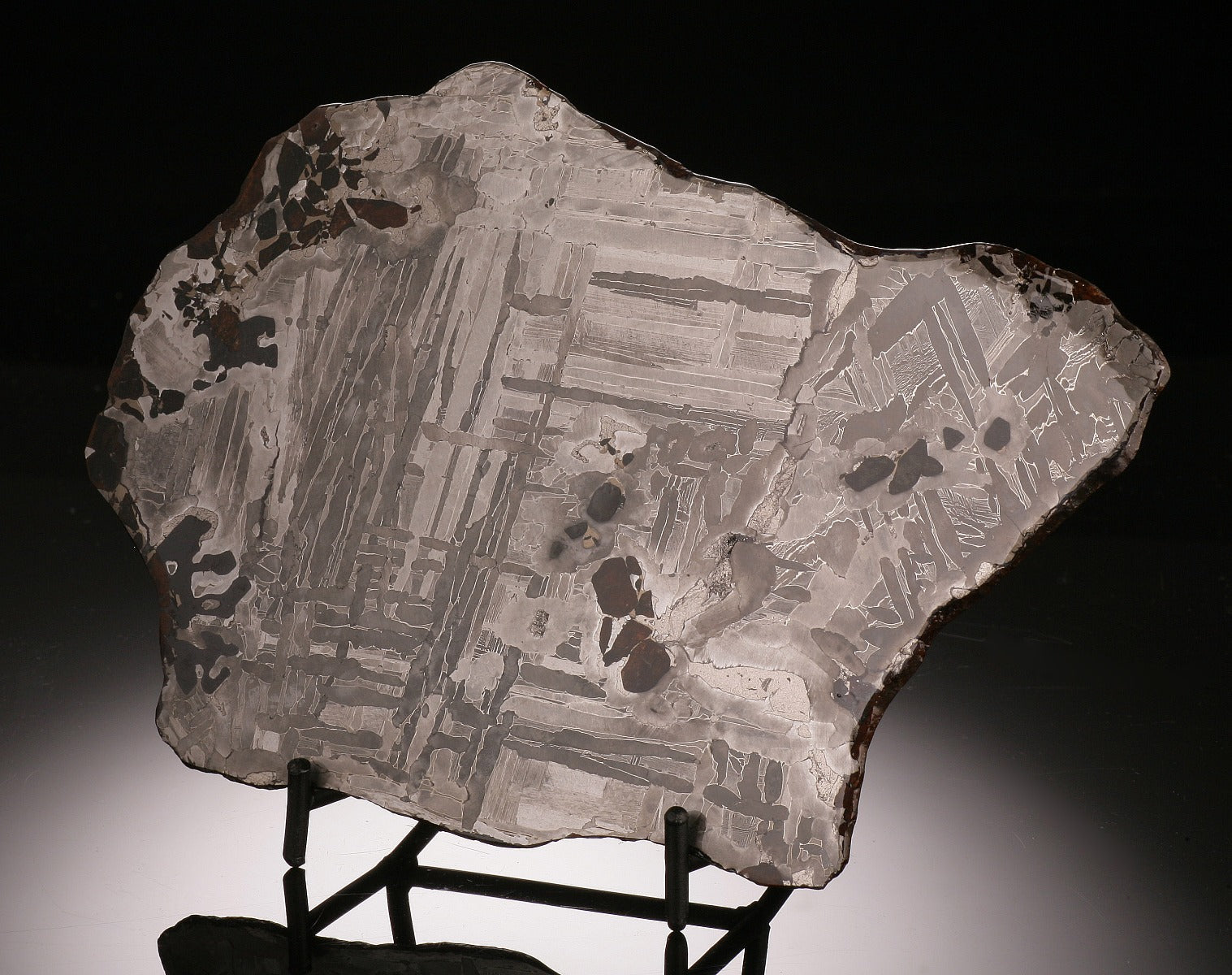




More Information
In 1967, a geologist conducting a survey in a remote region of the Russian Far East stumbled upon a large iron mass in a dry riverbed. Later that year, a smaller mass of the same composition was found close by, with the aid of a land-mine detector. These finds together were named for the small, nearby settlement of Seymchan.
The first mass found was turned in to the Academy of Sciences of the USSR, and after its study was classified in 1974 as a Rare IIE Iron Meteorite. Further studies conducted on the Seymchan demonstrated it to be too different from other meteorites in this class and it was changed to an "Ungrouped Iron". It remained that way until 2004 when an additional 50kg of the meteorite was discovered.A portion of this, about 20%, actually contained the mineral Olivine, meaning it couldn't be simply an iron meteorite.
After further study it was again reclassified, this time as part of the main group of pallasite meteorites. Pallasite meteorites are the most beautiful and valuable meteorites. "Making up less than 2% of all meteorite falls", this type of meteorite is extremely rare. Pallasites are categorized as stoney-iron meteorites, as they are composed of olivine crystals embedded in a nickel-iron matrix.

